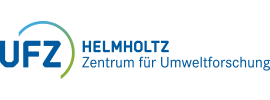Details zur Publikation |
| Kategorie | Textpublikation |
| Referenztyp | Zeitschriften |
| DOI | 10.1016/j.ecolind.2024.112048 |
Lizenz  |
|
| Titel (primär) | Quantifying ecosystem services of rewetted peatlands − the MoorFutures methodologies |
| Autor | Tanneberger, F.; Berghöfer, A.
|
| Quelle | Ecological Indicators |
| Erscheinungsjahr | 2024 |
| Department | OEKON; UPOL |
| Band/Volume | 163 |
| Seite von | art. 112048 |
| Sprache | englisch |
| Topic | T5 Future Landscapes |
| Supplements | Supplement 1 |
| Keywords | Organic soil; Peatland restoration; Greenhouse gas emission; Proxy; Bioindication |
| Abstract | In 2011, MoorFutures® were introduced as the first standard for generating credits from peatland rewetting. We developed methodologies to quantify ecosystem services before and after rewetting with a focus on greenhouse gas emissions, water quality, evaporative cooling and mire-typical biodiversity. Both standard and premium approaches to assess these services were developed, and tested in the rewetted polder Kieve (NE-Germany). The standard approaches are default tier 1 estimation procedures, which require little time and few, mainly vegetation data. Based on the Greenhouse gas Emission Site Type (GEST) approach, emissions decreased from 1,306 t CO2e in the baseline scenario to 532 t CO2e in the project scenario, whereas 5 years after rewetting they were assessed to be 543 t CO2e per year. Nitrate release assessed via Nitrogen Emission Site Types (NEST) was estimated to decrease from 1,088 kg N (baseline) to 359 kg N (project), and appeared to be 309 kg N per year 5 years after rewetting. The heat flux − determined with Evapotranspiration Energy Site Types (EEST) – decreased from 6,691 kW (baseline) to 1,926 kW (project), and was 2,250 kW per year 5 years after rewetting. Mire-specific biodiversity was estimated to increase from very low (baseline) to high (project), but was only low 5 years after rewetting. The premium approaches allow quantifying a particular ecosystem service with higher accuracy by measuring or modelling. The approaches presented here have been elaborated for North-Germany but can be adapted for other regions. We encourage scientists to use our research as a model for assessing peatland ecosystem services including biodiversity in other geographical regions. Using vegetation mapping and indicator values derived from meta-analyses is a cost-efficient and robust approach to inform payment for ecosystem services schemes and to support conservation planning at regional to global scales. |
| dauerhafte UFZ-Verlinkung | https://www.ufz.de/index.php?en=20939&ufzPublicationIdentifier=29232 |
| Tanneberger, F., Berghöfer, A., Brust, K., Hammerich, J., Holsten, B., Joosten, H., Michaelis, D., Moritz, F., Reichelt, F., Schäfer, A., Scheid, A., Trepel, M., Wahren, A., Couwenberg, J. (2024): Quantifying ecosystem services of rewetted peatlands − the MoorFutures methodologies Ecol. Indic. 163 , art. 112048 10.1016/j.ecolind.2024.112048 |
|
